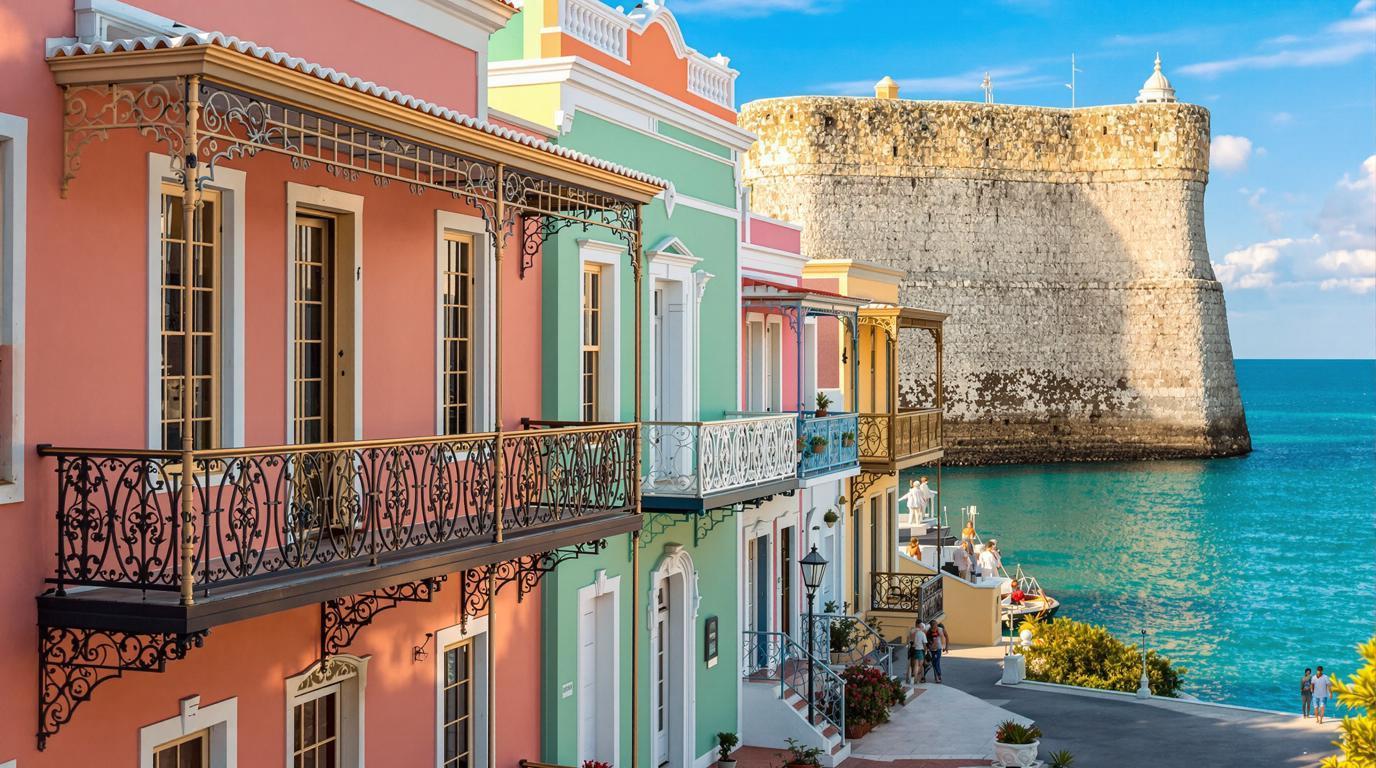Standing at the edge of America’s southernmost point, Key West’s pastel-colored buildings and wrought-iron balconies create an uncanny resemblance to Old Havana’s colonial architecture. This 4-by-1.5-mile coral island, home to just 24,194 residents, guards military secrets that shaped American history while offering something Cuba cannot: pristine waters averaging 85°F and zero visa requirements.
Unlike the crowded cruise ports that dominate Caribbean tourism, Key West’s authentic charm lies beyond the tourist facade. The island’s unique position, 100 miles from mainland Florida, created a cultural melting pot where Caribbean influences merged with American military heritage.
What most visitors miss is the profound historical significance hidden beneath the tropical paradise veneer. This isn’t just another beach town with good rum—it’s America’s Gibraltar of the West, strategically positioned to control the Gulf of Mexico.
The Military Fortress That Controlled the Caribbean
Fort Zachary Taylor’s Strategic Dominance
Construction began in 1845 using massive granite blocks, creating walls five feet thick and 50 feet high that housed 42 cannons and 800 troops. During the Civil War, this fortress served as the Union’s critical blockade headquarters, intercepting Confederate ships attempting to break the naval siege. The fort’s strategic importance extended far beyond wartime—it controlled the shipping lanes between the Atlantic and Gulf of Mexico, making Key West a crucial maritime crossroads.
Hidden Underground Passages
Local historians reveal that Fort Taylor contains unexplored underground chambers and tunnels that connected to the island’s defensive network. These passages, some still sealed, were designed to move troops and supplies during siege conditions. The fort’s 1898 modifications included battery upgrades that preserved Civil War-era infrastructure while adapting to modern warfare needs.
Caribbean Culture Without the Passport
Bahama Village’s Authentic Heritage
While tourists crowd Duval Street, the real Cuban cultural fusion thrives in Bahama Village, where descendants of Caribbean immigrants maintain traditions dating back 150 years. This neighborhood features conch-style architecture built from local coral limestone, adapted to humid tropical conditions using Caribbean construction techniques. The area’s authentic restaurants serve Cuban-Bahamian fusion cuisine that predates the tourist industry by generations.
Maritime Trading Legacy
Key West’s prosperity came from its position along the Gulf Stream, where salvage operations and sponge diving created a multicultural community of Cuban, Bahamian, and American settlers. The island’s unique “Conch Republic” identity stems from this independent maritime culture, where residents developed their own customs distinct from mainland American traditions.
Travel Note: The best time to experience authentic Key West is during summer months when tourist crowds thin out. Local fishermen and dive operators offer genuine experiences without the winter season’s inflated prices and packed attractions.
The Tropical Advantage Tourists Overlook
Year-Round Swimming Conditions
Key West’s tropical climate maintains water temperatures between 80-85°F even in winter, with no recorded frost in the island’s meteorological history. This consistent warmth allows year-round water activities that northern Caribbean islands cannot match during their cooler months. The surrounding coral reefs, accessible directly from shore, offer world-class snorkeling without expensive boat trips.
Climate-Controlled Historical Exploration
Summer visitors discover that Fort Taylor’s thick granite walls and underground chambers provide natural air conditioning during peak heat. The fortress includes shaded areas and historical artifacts that offer respite from tropical temperatures while revealing American military engineering innovations. Adjacent Martello Towers house the Key West Art and Historical Museum, featuring climate-controlled exhibits about the island’s maritime heritage.
Local Secrets Beyond the Tourist Trail
Island Dimensions and Coral Formation
Few realize that Key West sits on a living coral reef system that continues growing beneath the island’s limestone foundation. The island’s compact size—walkable end-to-end in 45 minutes—concentrates authentic experiences within a manageable area. This geography created a unique ecosystem where Caribbean and American cultures blended naturally over 175 years.
Authentic Alternatives to Mainstream Tourism
Local residents recommend exploring nearby Marathon and Islamorada for less crowded experiences, though Key West offers cultural depth these alternatives lack. Similar island destinations worldwide rarely combine American accessibility with Caribbean authenticity so seamlessly.
Key West’s genius lies in its ability to deliver Caribbean authenticity without leaving American waters. The island’s military heritage, cultural fusion, and tropical perfection create an experience that transcends typical beach destinations. While Cuba remains off-limits to many American travelers, Key West offers the architectural beauty of Havana with the historical significance of a Civil War fortress.
The real question isn’t whether Key West resembles Havana—it’s whether you’ll discover this Caribbean-American fusion before overtourism transforms another authentic destination into a theme park version of itself.
Frequently Asked Questions
When is the best time to visit Key West for authentic experiences?
Summer months offer the most authentic experience with fewer crowds, though temperatures reach 90°F. Winter provides comfortable weather but attracts peak tourism. Hurricane season (June-October) brings afternoon thunderstorms but also the most affordable accommodation rates.
How do accommodation costs compare to mainland Florida alternatives?
Key West commands premium pricing year-round, often 40-60% higher than Marathon or Islamorada. However, the island’s unique cultural attractions and walkable size justify the cost difference for travelers seeking authentic Caribbean-American experiences.
Is Fort Zachary Taylor worth visiting during summer heat?
Absolutely. The fort’s thick granite walls and underground chambers provide natural cooling, while the adjacent beach offers some of Key West’s clearest waters. Early morning visits (8-10 AM) offer the best combination of comfortable temperatures and uncrowded exploration.
What makes Key West different from other Caribbean destinations?
Key West uniquely combines American infrastructure and currency with authentic Caribbean culture and architecture. No passport required, English-speaking locals, and 175 years of cultural fusion create an experience impossible to replicate elsewhere in the Caribbean.
